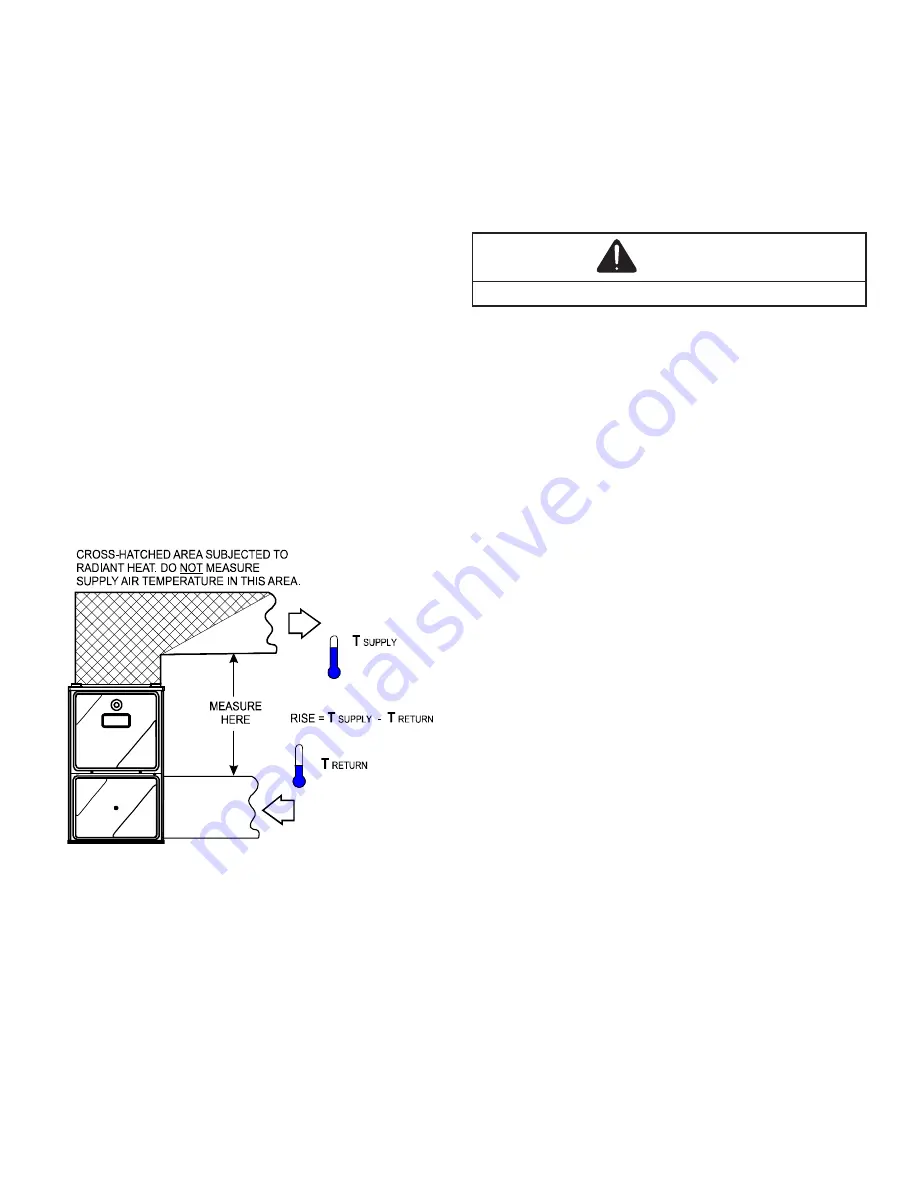
39
SAFETY CIRCUIT DESCRIPTION
A number of safety circuits are employed to ensure safe
and proper furnace operation. These circuits serve to
control any potential safety hazards and serve as inputs
in the monitoring and diagnosis of abnormal function.
These circuits are continuously monitored during furnace
operation by the integrated control module.
WARNING
DO NOT BYPASS ANY SAFETY DEVICES.
Integrated Control Module
The integrated control module is an electronic device
which, if a potential safety concern is detected, will
take the necessary precautions and provide diagnostic
information through an LED.
Primary Limit
The primary limit control is located on the partition panel
and monitors heat exchanger compartment temperatures.
It is a normally-closed (electrically), automatic reset,
temperature-activated sensor. The limit guards against
overheating as a result of insufficient conditioned air
passing over the heat exchanger.
Auxiliary Limit
The auxiliary limit controls are located on or near the
circulator blower and monitors blower compartment
temperatures. They are a normally-closed (electrically),
manual-reset sensors. These limits guard against
overheating as a result of insufficient conditioned air
passing over the heat exchanger.
Rollout Limit
The rollout limit controls are mounted on the burner/
manifold assembly and monitor the burner flame. They
are normally-closed (electrically), manual-reset sensors.
These limits guard against burner flames not being
properly drawn into the heat exchanger.
Pressure Switches
The pressure switches are normally-open (closed during
operation) negative air pressure-activated switches. They
monitor the airflow (combustion air and flue products)
through the heat exchanger via pressure taps located on
the induced draft blower and the coil front cover. These
switches guard against insufficient airflow (combustion
air and flue products) through the heat exchanger and/or
blocked condensate drain conditions.
Temperature Rise
Temperature rise must be within the range specified on the
unit rating plate. An incorrect temperature rise may result
in condensing in or overheating of the heat exchanger.
An airflow and temperature rise table is provided in the
Specification Sheet applicable to your model. Determine
and adjust temperature rise as follows:
1.
Operate furnace with burners firing for approximately
ten minutes. Ensure all registers are open and all
duct dampers are in their final (fully or partially open)
position.
2.
Place thermometers in the return and supply ducts
as close to the furnace as possible. Thermometers
must not be influenced by radiant heat by being able
to “see” the heat exchanger.
3. Subtract the return air temperature from the supply
air temperature to determine the air temperature
rise. Allow adequate time for thermometer readings
to stabilize.
4. Adjust temperature rise by adjusting the circulator
blower speed. Increase blower speed to reduce
temperature rise. Decrease blower speed to
increase temperature rise. Refer to Startup
Procedure and Adjustment - Circulator Blower
Speeds for speed changing details.
SUPPLY
AIR
RETURN
AIR
Temperature Rise Measurement
Figure 50
OPERATIONAL CHECKS
The burner flames should be inspected with the burner
compartment door installed. Flames should be stable,
quiet, soft, and blue (dust may cause orange tips but
they must not be yellow). Flames should extend directly
outward from the burners without curling, floating, or lifting
off. Flames must not impinge on the sides of the heat
exchanger firing tubes.
















































